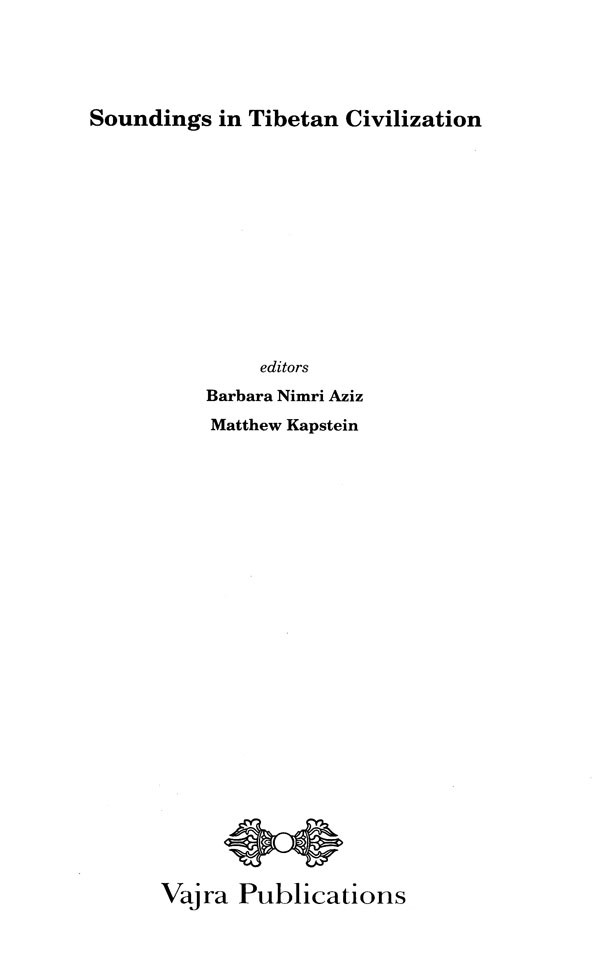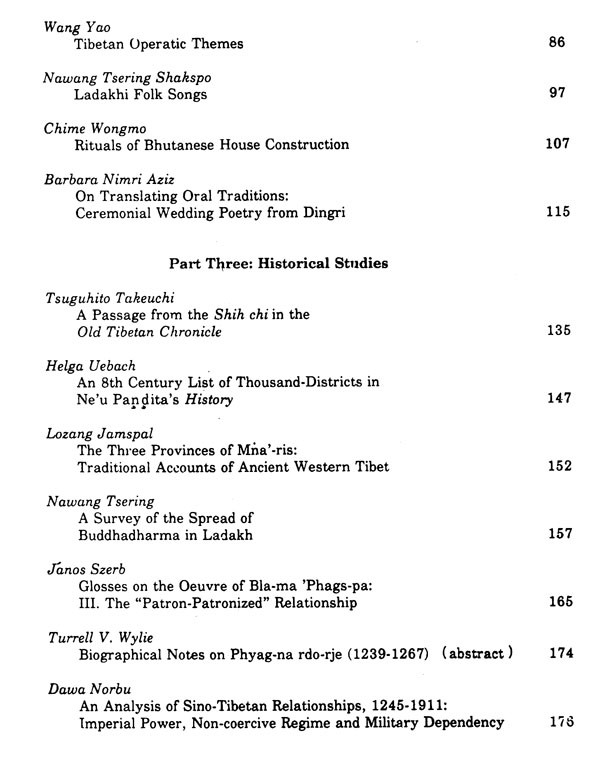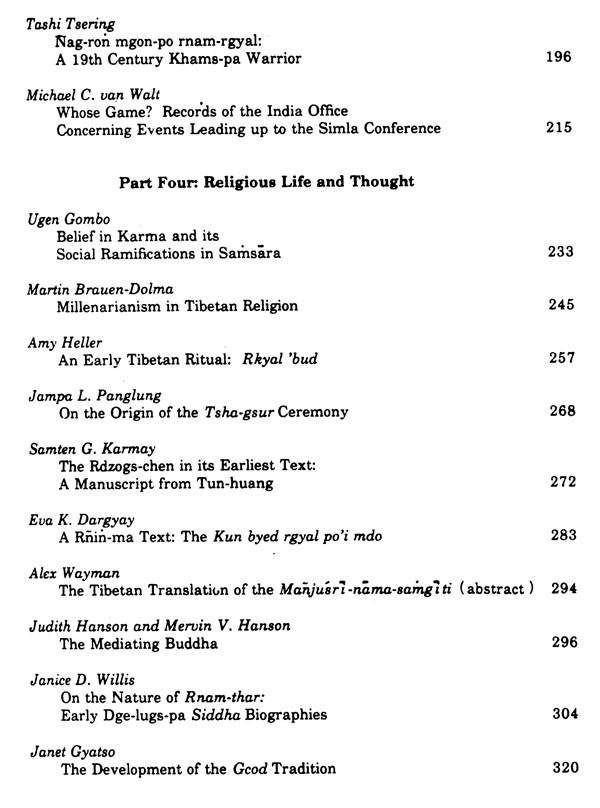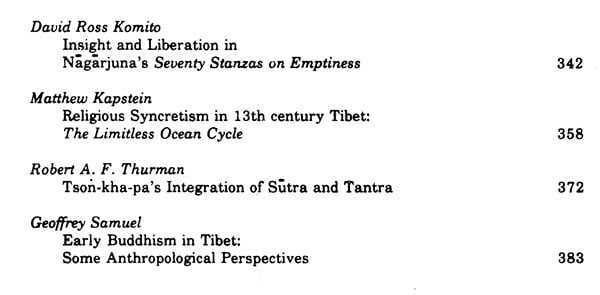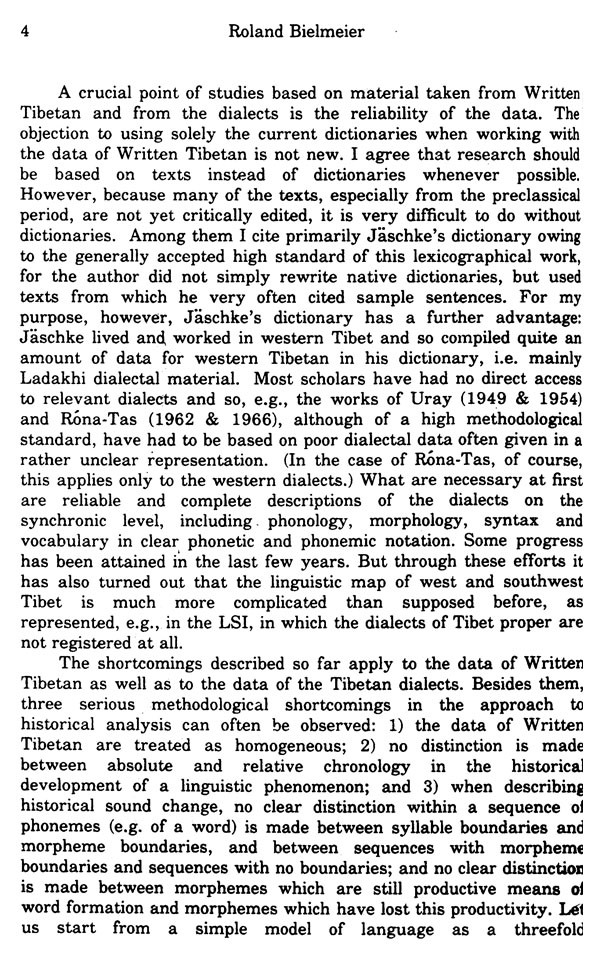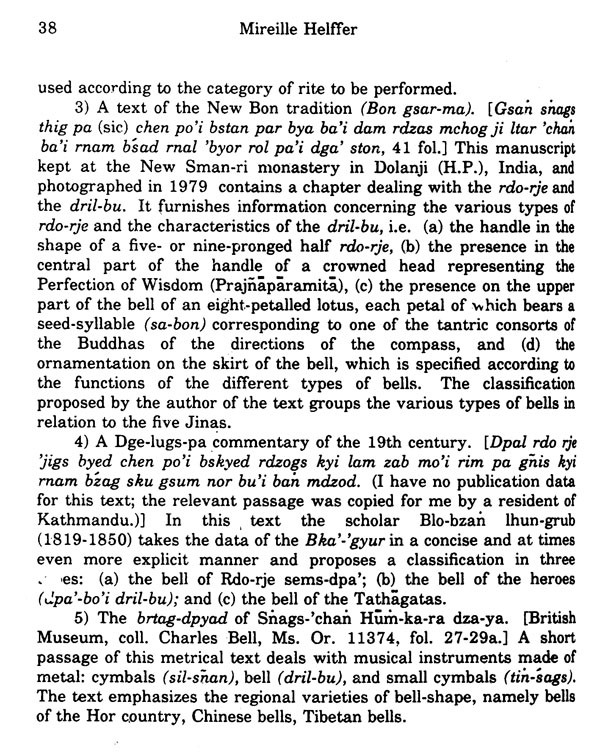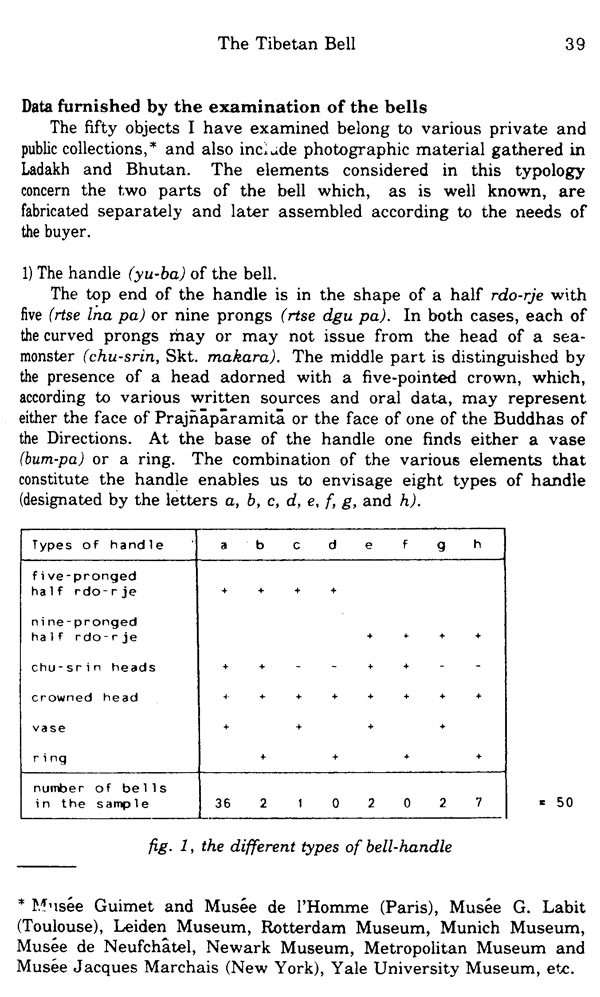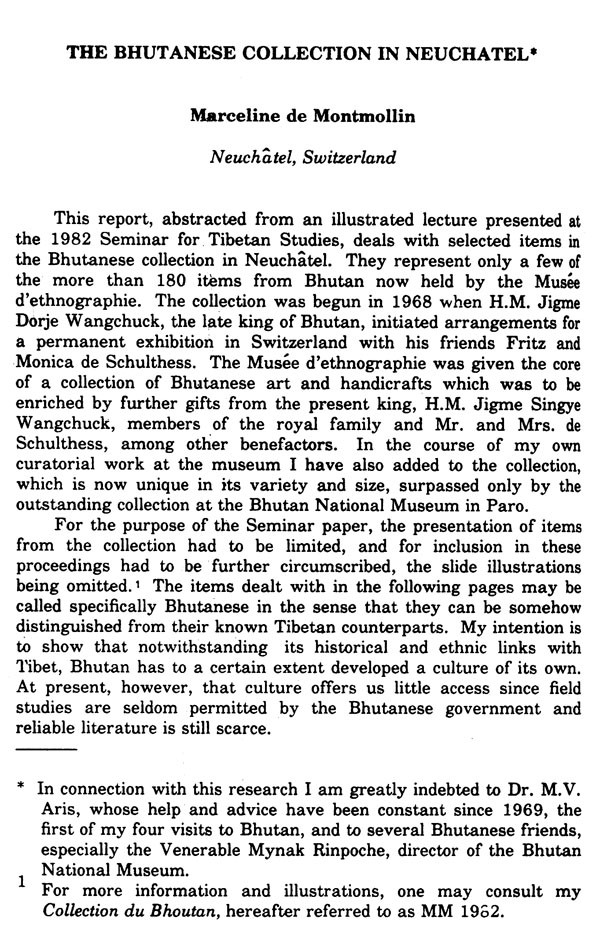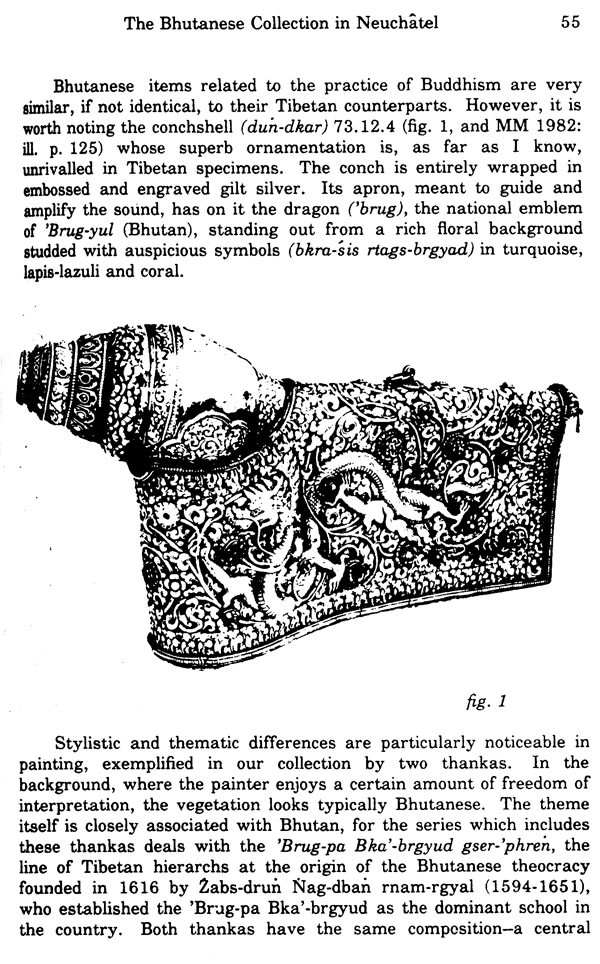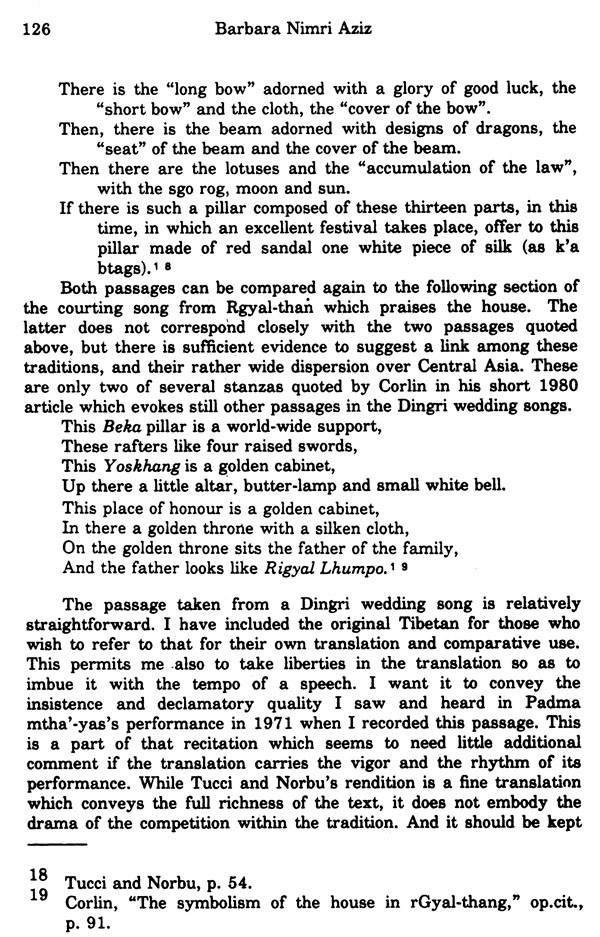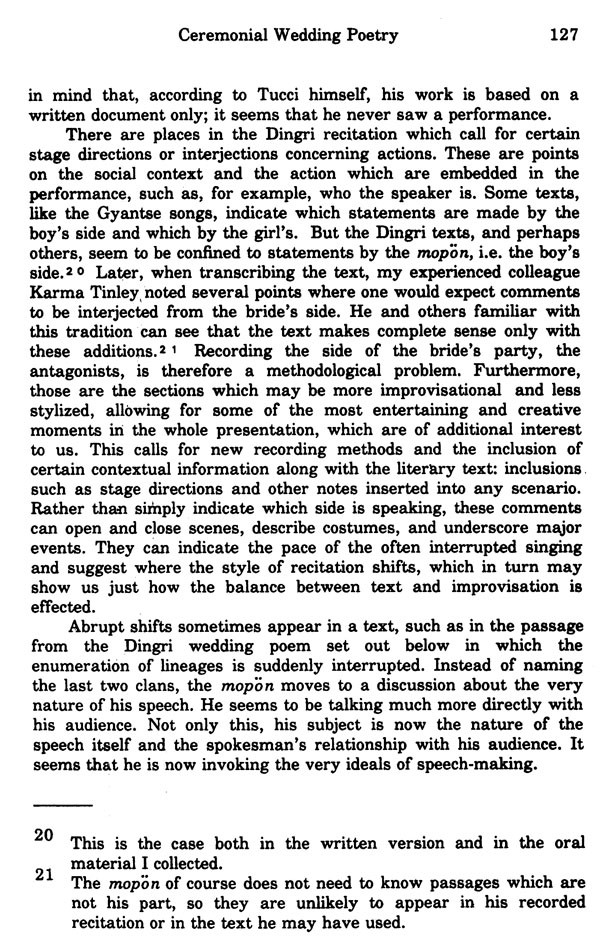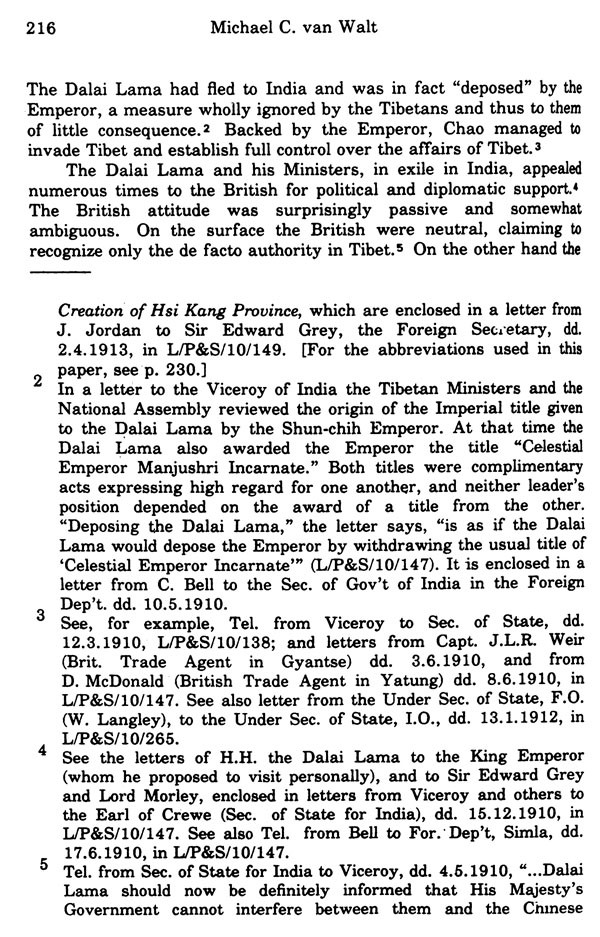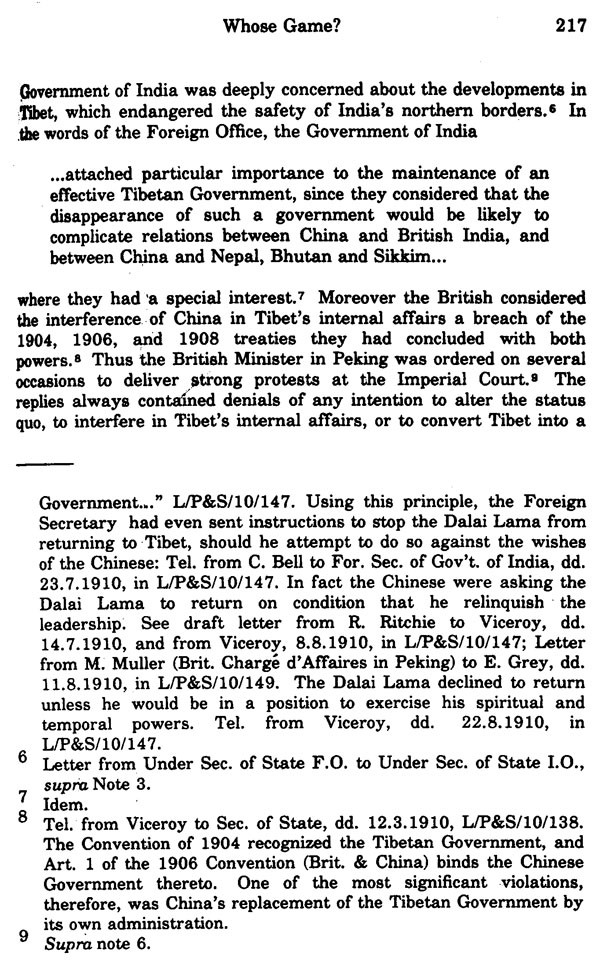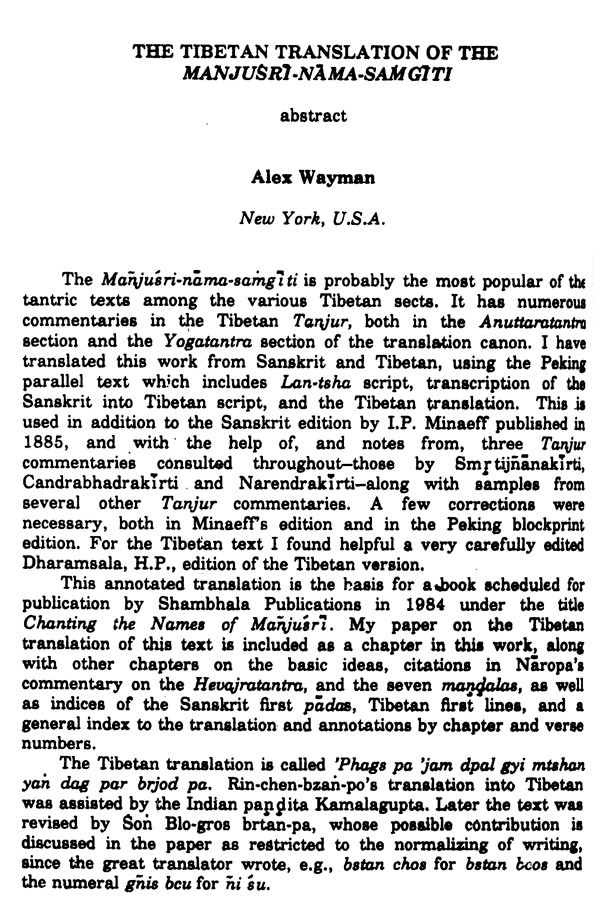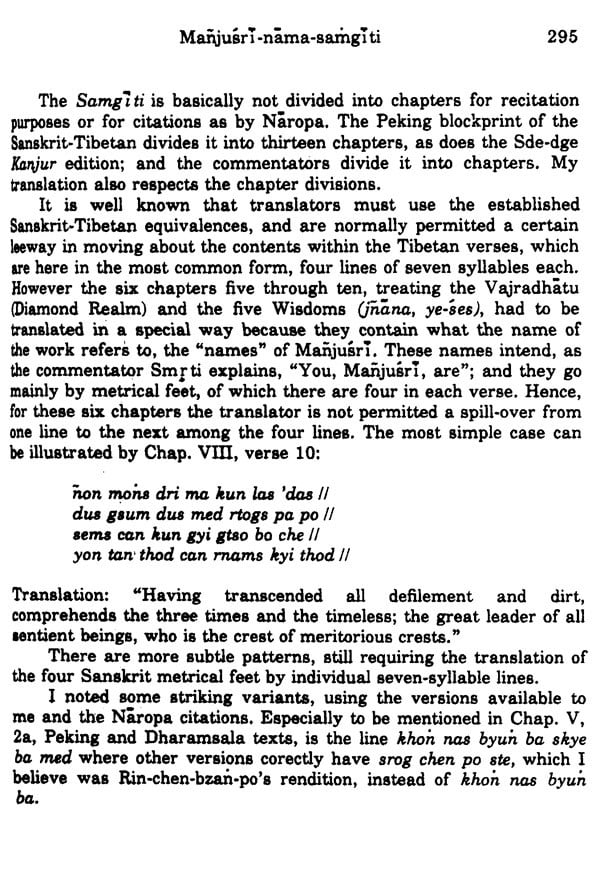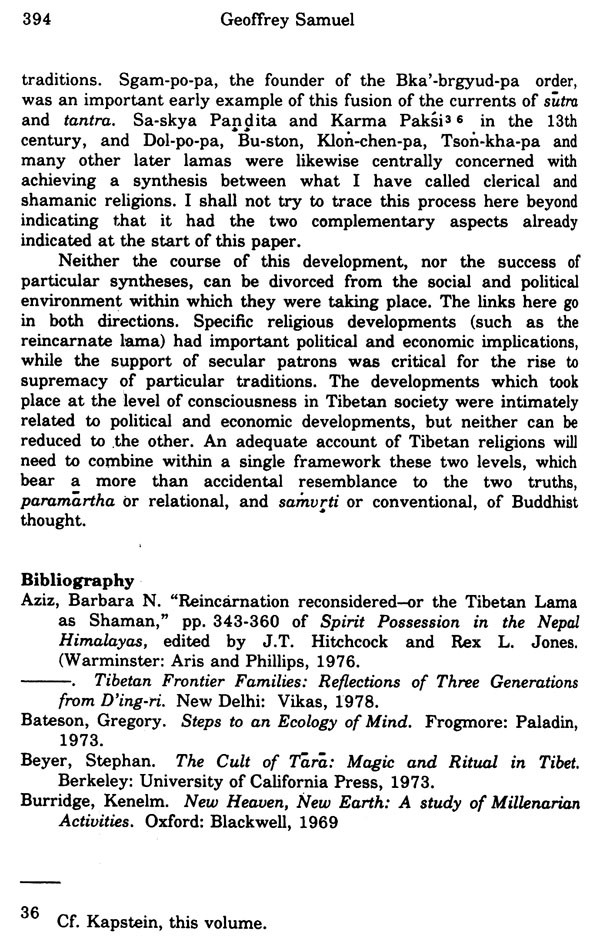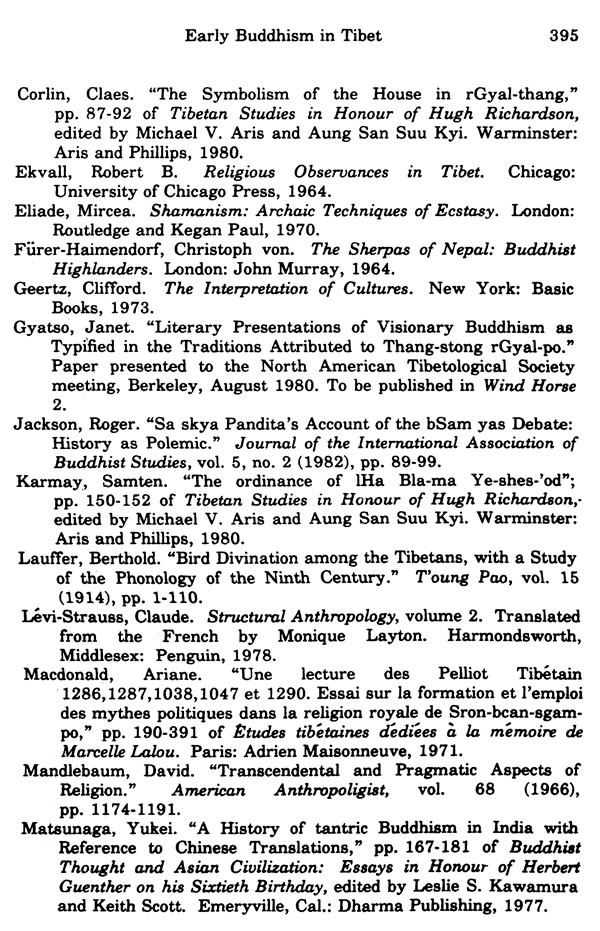
Soundings in Tibetan Civilization
Book Specification
| Item Code: | UAO663 |
| Author: | Barbara Nimri Aziz and Matthew Kapstein |
| Publisher: | Vajra Publications, Nepal |
| Language: | English |
| Edition: | 2009 |
| ISBN: | 9789937506342 |
| Pages: | 428 (Throughout B/w Illustrations) |
| Cover: | PAPERBACK |
| Other Details | 8.50 X 5.50 inch |
| Weight | 550 gm |
Book Description
Originally the 32 papers and two abstracts published herein were presented at the international seminar convened in 1982 at Columbia University in New York City. The papers were further edited to include the results of the seminar and to combine them together for the large community of interested readers. This volume is now the third publication since 1977 resulting from seminars organized by the International Association for Tibetan Studies.
Recently, as a result of an enquiry into the existence of ancient writings of early masters of the Mar-pa Bka'-brgyud-pa, Rnying-ma pa, Zhi-byed, Geod, and Jo-nang-pa traditions in the Bhotis borderlands of western Nepal, the mechanism by which ancient traditions are displaced and textual sources rendered obsolete by newer religious movements which enter the area from outside became clear. In just two generations the Bdud-joms Khros-ma teachings which originated at the other end of the Tibetan-speaking world in the Mgo-log area of A-mdo have spread to most of the village temples and local lamas of Humla and Dolpo. This is largely a result of the efforts of Bde-ba'i-rgyal-po of Nam-mkha' Khyung Rdzong and his disciple, Sprul-sku Tshe-dbang. Two centuries earlier, the area witnessed an earlier spread of the gter-ma revelations of 'Ja'-mtshon snying-po, Bdud-'dul-rdo-rje, and Gter-bdag-gling-pa. The older practices fell into disuse. No longer were the lung of the texts transmitted, nor were initiations and oral transmissions passed on. The process ultimately resulted in the ancient manuscripts and blockprints of such great local scholars as Kun-mkhyen Dol-po-pa and Dbon-po Shes-rab-'byung-gnas being interred in stupas.
Occasionally, however, a great lama would come who, through his new teachings and revelations, would renew and incorporate older traditions which were near extinction. This process has occurred among the Rnying-ma-pa and accounts for the forging of bonds between two or more gter-ston whose revelations are seen as somehow reinforcing each other.
The papers included here are the work of thirty-four scholars who participated in the first seminar of International for Tibetan Studies, held under the of the late Professor Turrell V. Wylie, to whom these proceedings are dedicated. The conference, hosted by the Southern Asian Institute, University in July 1982, and convened by Barbara Nimri Aziz, was the third in a serics of seminars designed to bring together scholars working in different disciplines throughout the world who share a common focus on Tibet. These meetings have provided researchers, often working in isolation, with the opportunity to share and discuss their work with other authorities in their specific fields, and have also encouraged interdisciplinary exchange. With this publication of participants' papers, gleanings from their ongoing research and the fruits of that exchange become available to a larger community of professional scholars and others interested in Tibetan history and civilization.
In arranging the contributions in this volume we have attempted to underscore what thematic unity may be found herein, but without imposing an artificial unity on a body of material representing such variety of subject-matter and methodology. The main areas of research represented are language, the arts oral traditions Tibet, historical studies, and religion; and these have provided the basis for our grouping of papers.
**Contents and Sample Pages**
